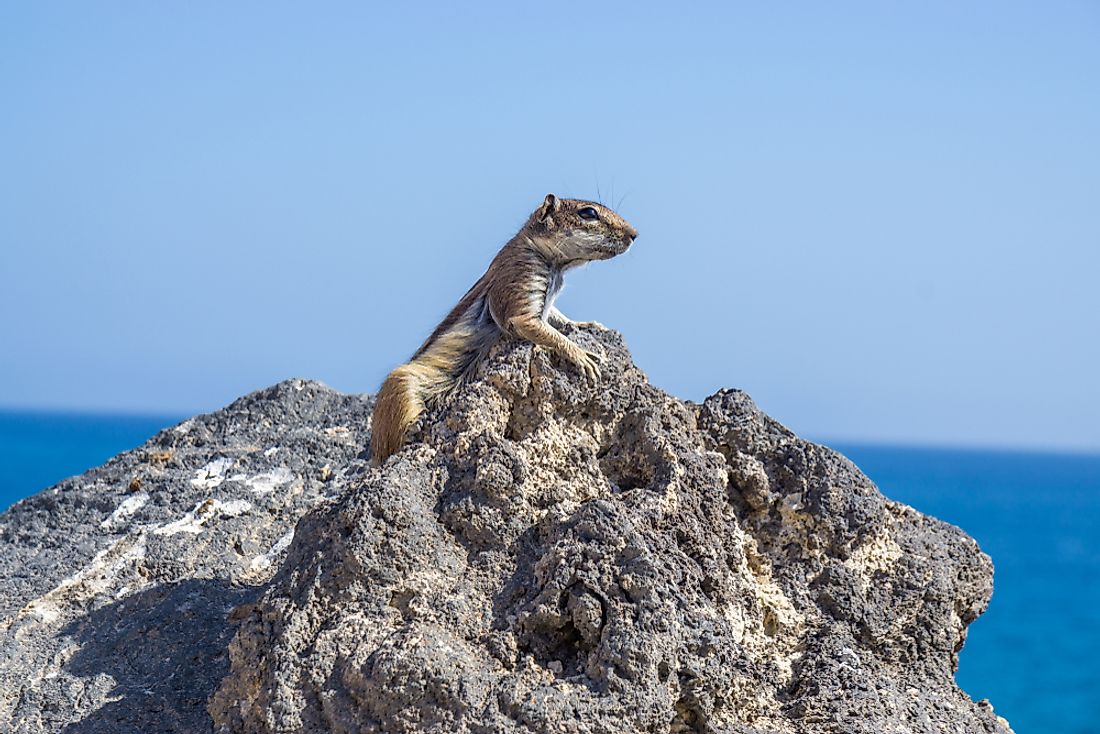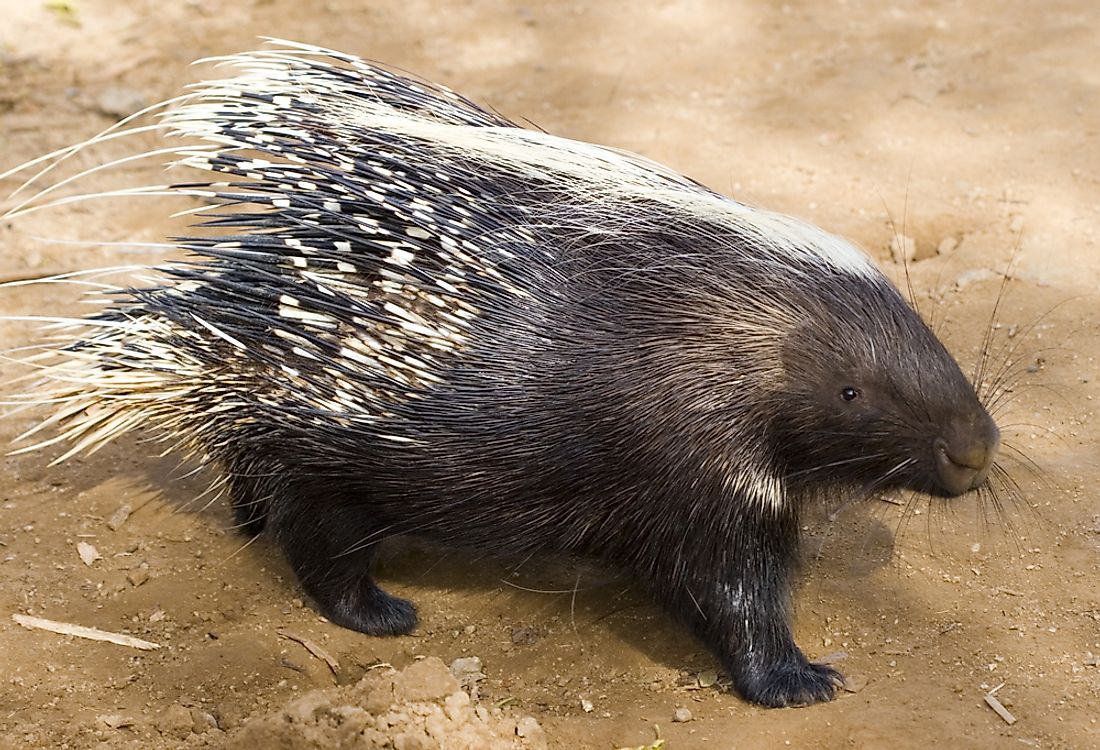Morocco Animals — What Kind of Animals Live in Morocco?

Officially known as the Kingdom of Morocco, Morocco is a nation that lies in the northwestern region of the African continent. With at least 40 ecosystems throughout the nation, Morocco has a wide variety of animals ranging from birds to mammals. This variety exists despite the relative harsh arid climate that the nation experiences. Since the area has a harsh climate, the government heavily protects these ecosystems through the formation of national parks and national reserves. There are at least 210 bird species in the nation as well as around 105 species of mammals of which 11 bird species and 18 mammal species are classified as threatened.
10. North African Hedgehog

This diminutive animal, which is also known as the Algerian hedgehog, has a close resemblance to the European hedgehog. However, the African one has a length of between 7.87 and 9.84 inches thus making it much smaller than its European counterpart. Physically, this mysterious animal has large ears and a light-colored face with a brown head and legs. The few that have been observed live in mixed forest climates in North Africa since they cannot survive in arid conditions. The females carry a pregnancy for between 30 and 40 days with a litter ranging from three to ten.
9. Barbary Macaque

Also known as a Barbary ape, the Barbary macaque is a true monkey that has a body length of around 21.9 inches for females while the males have a length of about 25.0 inches. Males are slightly larger with a weight of about 32 pounds while females average around 21.8 pounds. The tail can be anywhere between 0.15 inches and 0.87 inches. These animals live in various habitats such as grasslands, rocky ridges, forests, and other places. The diet mostly includes insects and almost all parts of a plant.
8. Egyptian Mongoose

This species has a slender body that has a length of between 19 and 24 inches and a weight of between 3.7 and 8.8 pounds. In addition, they have black-tipped tails that have a length of between 13 and 21 inches. Forest, scrubs, or the savannas characterize their habitat. Regardless of the habitat, they are always close to a water source. With its sharp teeth, this mongoose feeds on meat from rodents, insects, reptiles, and amphibians. Eggs and fruits are also part of the diet. Like other mongoose species, they do not mix with snakes.
7. Crested Porcupine

The crested porcupine is a rodent that has a small length ranging from 24 to 33 inches. On average, an adult weighs between 29 and 60 pounds. The characteristic bristles that cover porcupines cover their bodies as well. In addition to the normal quills, there are stronger quills that have a length of about 14 inches, which are for defense. The name comes from the animal’s ability to raise the quills thus forming a crest. This terrestrial animal is mostly herbivorous with the diet including things like leaves, roots, and bulbs. Occasionally, carrion, small vertebrates, and insects are part of the diet.
6. Barbary Sheep

This subspecies of the wild sheep has a reddish dark-striped coat with short hair. The males are horned while females may or may not have horns. Mature rams have horns that have a length of around 33 inches and an average weight of 110 pounds for males while the females average about 77 pounds. Currently, they are classified as vulnerable due to excessive hunting. Females mature between two and four years and carry a pregnancy for five months.
5. Moorish Wall Gecko

These reptiles are commonly observed living in urban areas and have a length of about 5.91 inches. Other names include the European common gecko, crocodile gecko, Salamanquesa, and common gecko. Primarily, they are nocturnal but they are sometimes active during the day. Their brown or brownish grey colors usually get lighter during the light of day and get darker during the night. In urban areas, they can be found on trees trunks, constriction sites, ruins, and y other places. The diet is mostly composed of insects.
4. Sand Cat

Also called the sand dune cat, the near threatened sand cat resembles the domestic cat. Physically, it has a weight of between 3.3 and 7.5 pounds and a shoulder height of between 9.4 and 14.2 inches. The cat has a flat broad head coupled with short legs and a tail with a length ranging from 9.1 to 12.2 inches. This cat likes to live in a desert habitat that is flat or almost flat. Since they live in deserts, the habits have little food and little vegetation. The cat can go for months without water and can survive entirely on bodily fluids from its food.
3. Barbary Ground Squirrel

This rodent is a diminutive one with a length of between 6.3 and 8.7 inches and a bushy tail of equal length. On average, they weigh around 12 ounces. Generally, their coats are reddish brown or greyish-brown with a white stripe along the sides and sometimes along the spine too. The rodents prefer to live in groups in burrows dug in rocky areas or grasslands. Burrows dug in agricultural land are common for this animal. The diet is primarily seeds and fruits.
2. Common Gundi

The gundi is also a rodent that grows to a length ranging from 6.3 to 7.9 inches and a shorter tail that is less than one inch. The weight averages around 6.5 ounces only and a physical appearance resembling that of a guinea pig. The animals can live in areas with an altitude of up to 9,500 feet. These diurnal herbivores make their homes below boulders and in rock crevices. These animals live in groups of between three and eleven.
1. Fennec

This small fox is the smallest one in its family with a weight of between 1.5 and 3.5 pounds only. The body length ranges from 9 to 16 inches while its long ears have a length ranging from 3.9 to 5.9 inches. Their fluffy coats are usually cream-colored for heat reflection during the day. This fox is omnivorous with the diet including rodents, rabbits, birds, eggs, and other things. A special adaptation is that they can live for long periods without water.











